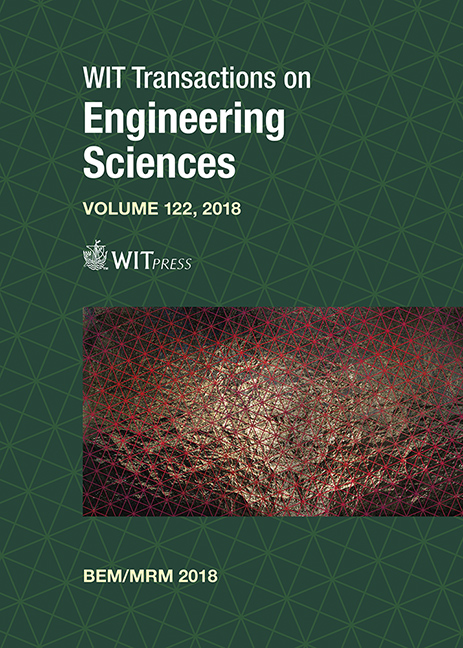MULTIPLE FATIGUE CRACK GROWTH MODELLING IN NONHOMOGENEOUS STRUCTURAL SYSTEMS USING THE DUAL BEM
Price
Free (open access)
Transaction
Volume
122
Pages
12
Page Range
27 - 38
Published
2019
Paper DOI
10.2495/BE410031
Copyright
WIT Press
Author(s)
HEIDER DE CASTRO E ANDRADE, EDSON DENNER LEONEL
Abstract
This study presents a numerical scheme for the fatigue crack growth modelling in plane nonhomogeneous structural systems. The structural domain is assumed as composed of piecewise homogeneous isotropic materials. The high-cycle fatigue case is assumed. Consequently, the linear elastic fracture mechanics theory is utilized. The mechanical behaviour is represented by the dual boundary element method (DBEM), in which singular and hypersingular integral equations are applied. The DBEM is an efficient and robust numerical technique for crack propagation analyses, especially due to the non-requirement of the domain mesh. This aspect enables the accurate representation of the elastic fields around the crack tip and simplifies the remeshing process during the crack propagation. The singular integrals are evaluated through the singularity subtraction method. Third degree polynomial transformation is utilized for improving the accuracy of near-singular integrals. The interface between adjacent materials is assumed as perfectly bonded and the sub-region BEM approach is utilized for representing the nonhomogeneous bodies. The Paris’ law is utilized for determining the crack growth rate. The stress intensity factors are assessed by the J-integral and the maximum circumferential stress theory is adopted for defining the crack propagation angle and the range of equivalent stress intensity factor. The structural life is determined by a special scheme, which is based on discrete crack increments. One application is presented to illustrate the efficiency of the proposed model in simulating the fatigue crack growth in multiple cracked structures.
Keywords
fatigue, multiple crack growth, coalescence, dual boundary element method, nonhomogeneous domains





